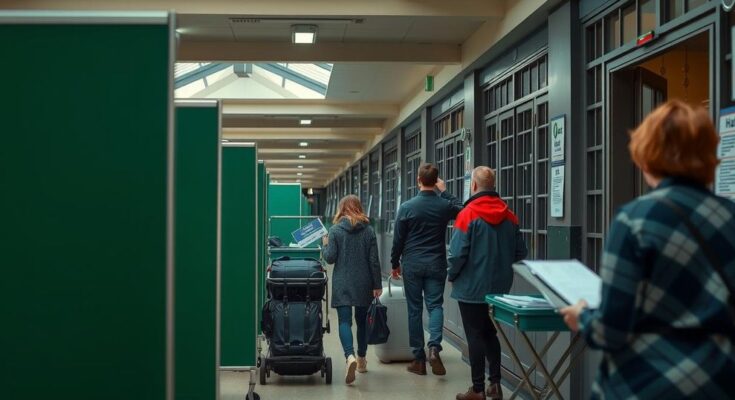Ireland is conducting a parliamentary election on November 28, 2024, with 3.8 million voters choosing 174 lawmakers amid a backdrop of global discontent with incumbents. Significant issues include housing shortages and immigration challenges. The election outcome is expected to reflect a divided electorate among major parties and independents, potentially leading to a reformed coalition government.
On November 28, 2024, Ireland commenced voting in a pivotal parliamentary election that carries significant implications for the future government. As 3.8 million citizens cast their ballots for 174 lawmakers to the Dail, the lower house of parliament, this election will also determine if the current administration can withstand the mounting pressures that have been affecting countries worldwide following years marked by a pandemic and heightened living costs.
Incumbent leadership has been governed by Fine Gael and Fianna Fail, parties with deep-rooted historical rivalries stemming from the civil war of the 1920s. Their coalition arrangement, formed after the 2020 election ended in a deadlock, has been characterized by alternating roles as Taoiseach. Current Taoiseach Simon Harris succeeded Leo Varadkar in March after Varadkar’s sudden departure. Sinn Fein, the primary opposition party, had previously made significant gains in the 2020 elections but was excluded from power due to the reluctance of the incumbent parties to collaborate, especially given Sinn Fein’s association with leftist politics.
The election landscape is multifaceted, with pressing issues such as the cost of living and immigration dominating campaign discussions. An ongoing housing crisis exacerbated by historical underinvestment has resulted in soaring prices and urgent homelessness concerns. “There was not building during the crisis, and when the crisis receded, offices and hotels were built first,” noted John-Mark McCafferty, a housing charity executive. Additionally, immigration, particularly from Ukraine and conflict-ridden regions, has emerged as a topic of contention, with the government struggling to provide adequate accommodation leading to rising tensions among residents regarding the influx.
Opinion polls predict an evenly divided electorate amongst Fine Gael, Fianna Fail, Sinn Fein, minor parties, and independents. Despite a campaign riddled with missteps from Fine Gael, their historical rival Fianna Fail maintains steady support, while Sinn Fein has expressed confidence in gaining ground. Analysts anticipate a potential reformation of the coalition government, possibly comprising a smaller party or independents acting as pivotal partners, as highlighted by political scientist Eoin O’Malley’s observation: “Coalition-forming is about putting a hue on what is essentially the same middle-of-the-road government every time.”
Results from the election are expected to be released post-close on November 29, with counting processes possibly extending into subsequent days. Should coalition dynamics unfold as anticipated, the continuity of the existing political framework appears very plausible within the context of Ireland’s evolving challenges.
This election is crucial in determining the direction of Ireland’s governmental landscape amidst global trends of voter dissatisfaction. The ongoing challenges presented by the cost-of-living crisis, particularly in housing, have driven the political discourse and electorate sentiment. The election is further complicated by the historical context of party rivalries and the dynamic nature of coalition politics in Ireland, which showcases proportional representation allowing for a diverse range of candidates, including independents. This context is essential for understanding the electorate’s pressing concerns, notably housing shortages and the recent surge in immigration, which have the potential to sway voter allegiance in unexpected ways. In the lead-up to this election, public sentiment has indicated growing unrest regarding the government’s capacity to address various social and economic issues. The opposition party Sinn Fein has gained significant traction but faces challenges due to its historical connotations. As such, the election results could potentially reflect both the current administration’s effectiveness and the electorate’s aspirations for change.
The Irish parliamentary election taking place on November 28, 2024, is poised to reflect the electorate’s response to ongoing socio-economic challenges. The political landscape is heavily influenced by historical rivalries, pressing housing and immigration issues, and the dynamics of coalition governance. With the potential for reformation in leadership but no consensus on a viable alternative to the incumbents, the election outcome will likely reaffirm the complexities inherent in contemporary Irish politics. Consequently, as ballot counting commences, the political future of Ireland appears to be a balancing act among established parties and emergent independent candidates.
Original Source: apnews.com




